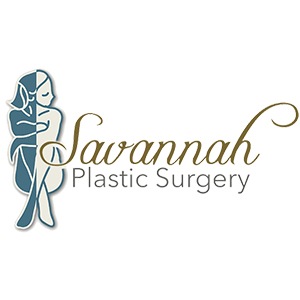Thinking about having a breast augmentation procedure ? It’s important to consider the recovery period when you decide what kind of procedure you want and when to have it. Here’s how the breast augmentation recovery process looks for the average person.
How Long Does It Take to Recover from Breast Augmentation?

Breast augmentation recovery can last between four and eight weeks, depending on several factors. The most significant is what kind of procedure you have. If you have a breast augmentation with implants, you can expect a recovery period around six to eight weeks. If you have a breast augmentation with fat transfer, you’ll recover faster because the incisions made in your breasts are smaller. The recovery period for this procedure is around four weeks.
While the first phase of recovery is up to 8 weeks, it can take 6 to 12 months for your breasts to completely heal. But by the three-month mark, however, your breasts will look similar to how they will when they’re fully healed.
Plan for a Smooth Recovery
During the days and weeks after breast augmentation surgery, you’ll feel varying amounts of discomfort and pain. Your breasts will feel swollen and tender, and there will be some bruising. If you’ve had an augmentation with fat transfer, you might also have swelling and bruising in the places where fat was removed with liposuction.
Before the day of surgery, your surgeon will give you instructions on what to do (and what not to do) to help your recovery go smoothly. It’s important to prepare as much as you can and to follow these instructions closely.
Some general recovery recommendations may include:
- Call your doctor or surgeon if you have a high temperature (over 100.4 degrees), if your incisions become infected, or if your pain isn’t relieved by prescribed medication.
- Take prescribed medications as directed – You can use your own discretion when it comes to painkillers: If you feel you don’t need it, it’s okay not to take it. But if you’re prescribed other medications, such as antibiotics, make sure to take the full course.
- Wear any compression or support garments as directed.
- Apart from prescribed compression garments, avoid wearing constrictive clothing during your recovery.
- Stick to a low-salt diet for the first few weeks to help reduce swelling.
- You can resume light activities the day after surgery, but avoid things like heavy lifting and strenuous or high-impact exercises.
- Most people can go back to work in a week or less – If your job involves heavy lifting or other strenuous activities, you might need a little longer.
- Low-impact exercise is fine after 7 to 10 days – If it’s uncomfortable or painful, wait a few days then try again.
- Avoid breast contact and sexual activity for the first three to four weeks – Your breasts will be sensitive to touch and stimulation.
- Avoid sleeping on your stomach for the first four weeks.
- At four to eight weeks, you can resume your normal activity levels – The amount of time you need depends on whether you have augmentation with implants or fat transfer and how well you heal during recovery.
What to Expect on the Day of Surgery
Breast augmentation is usually an outpatient procedure, which means you can go home on the same day you have it; you won’t have to stay overnight in a clinic or hospital. Most people have breast augmentations under a general anesthetic. Sometimes a surgeon may use a local anesthetic combined with a sedative. If that’s the case for you, you would be awake but relaxed and drowsy during the procedure.
After waking up from general anesthesia it’s normal to feel groggy and even a little confused. It’s also normal to feel some soreness around the breasts. If you’ve had a breast augmentation with fat transfer, there will also be some soreness in the parts of your body where fat was removed.
What to Expect in the First Few Days After Surgery
Even minor surgery can be physically demanding. It’s best to take it easy for the first few days of breast augmentation recovery, so your body has time to rest. But you don’t need to stay in bed all the time. In fact, it’s better for your recovery if you resume light activities within three to five days of the procedure.
During the first week, your recovery time after breast implants depends partly on your implant placement. If your implants are placed beneath the muscle, you’ll feel more soreness and have more swelling during this time. If you choose this placement option, it’s best to plan for up to a week of rest and low-level activity.
If you’ve had augmentation with fat transfer, you’ll recover more quickly. Many people can resume moderate activities the day after a breast augmentation via fat transfer, or within a couple of days.
Your Week One Follow-Up
A week after your procedure you’ll meet with your surgeon to make sure everything’s okay. They’ll look at your results and check that your breasts are healing well. To do this, your surgeon will check your incisions for signs of infection and look for things like swelling and implant placement.
This is the first time you’ll be able to take off your compression garment and really see how your breasts look, so it can be quite exciting! There will still be some swelling, but the results of your procedure will definitely be visible.
Don’t worry if your breasts don’t look like you were expecting. The swelling can make them appear larger than they will be once your recovery period is over. It can also affect how your breasts feel, as excess fluid in the area can make them firm, even hard, to the touch.
Three to Six Months After Your Breast Augmentation
By this point in the recovery process, most of your swelling will be gone, even if you’ve had an augmentation with implants. Your breasts will feel almost normal, though there may still be a little firmness and some residual discomfort at times. By the three-month mark, they should be looking and feeling good overall.
By now, your scars will have started to fade. During the first three months after surgery, implant scars become raised and can turn a deep, dark red in color. They might even appear to get bigger during this time. This is normal and nothing to worry about. At around the three-month mark, the scars will start to gradually fade, and by six months post-surgery, they should be almost fully healed.
If you’ve had breast augmentation with fat transfer, your swelling will reduce even more quickly. Swelling from liposuction should be almost completely gone by three months, and you should be able to see the final results of both the liposuction and the fat transfer.
Your healing should proceed smoothly at this point, whether you’ve had augmentation with implants or with fat transfer. But remember, if you feel unwell, have any signs or infection, or are worried about how your breasts look or feel, you can call your doctor or surgeon for advice.
What to Expect One Year after Surgery
At the one-year mark, your breasts are almost fully healed. There should be little swelling, if any, and your scars should be close to fully healed too. It can take another six months or so for the very last of the swelling and scarring to fade. By around 18 months your breasts will have finished healing. Your scars might continue to fade over time, but they won’t disappear completely.
Breast implants don’t last a lifetime, and many women do need to have their implants replaced in the future. The lifespan of a set of implants can be hard to predict. For a woman who has implants now, there’s a 90% chance they’ll last 10 years or longer. Some women do have issues that cause them to need replacements earlier than that. To improve the longevity of your implants, be thoughtful about size, shape, and placement to make sure you’re happy with the results. And follow your surgeon’s advice during your breast augmentation recovery to help healing go smoothly.
If you’ve had breast augmentation with fat transfer, the scars from both the liposuction and the transfer will be all but undetectable by a year out. At this point, both your breasts and your body are fully recovered, and the results you have now are permanent. But remember that your breasts might change shape as you get older, as the transplanted tissue is still subject to gravity. And weight gain is still a possibility. It’s important to maintain good diet and exercise habits to keep your new shape.
Recovery is a natural part of surgery, so it’s important to know what to expect from breast augmentation recovery. You can prepare for it and give your body what it needs for a smooth, predictable path to your new body!

